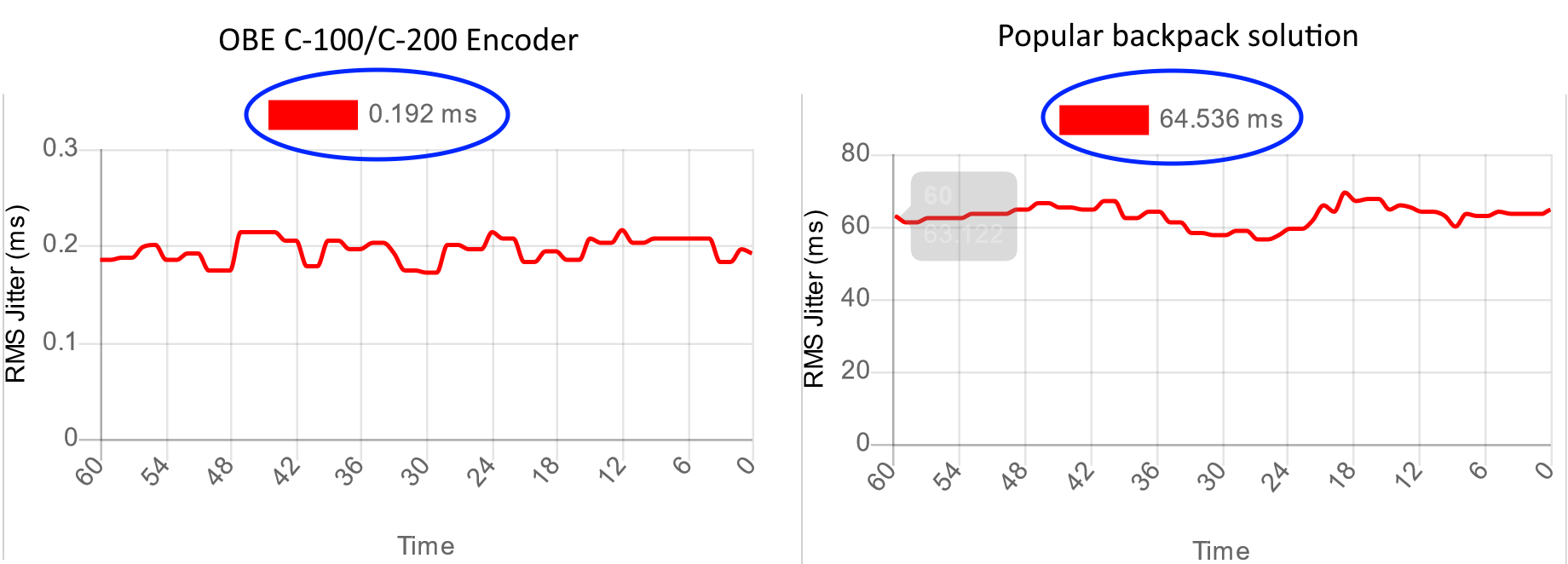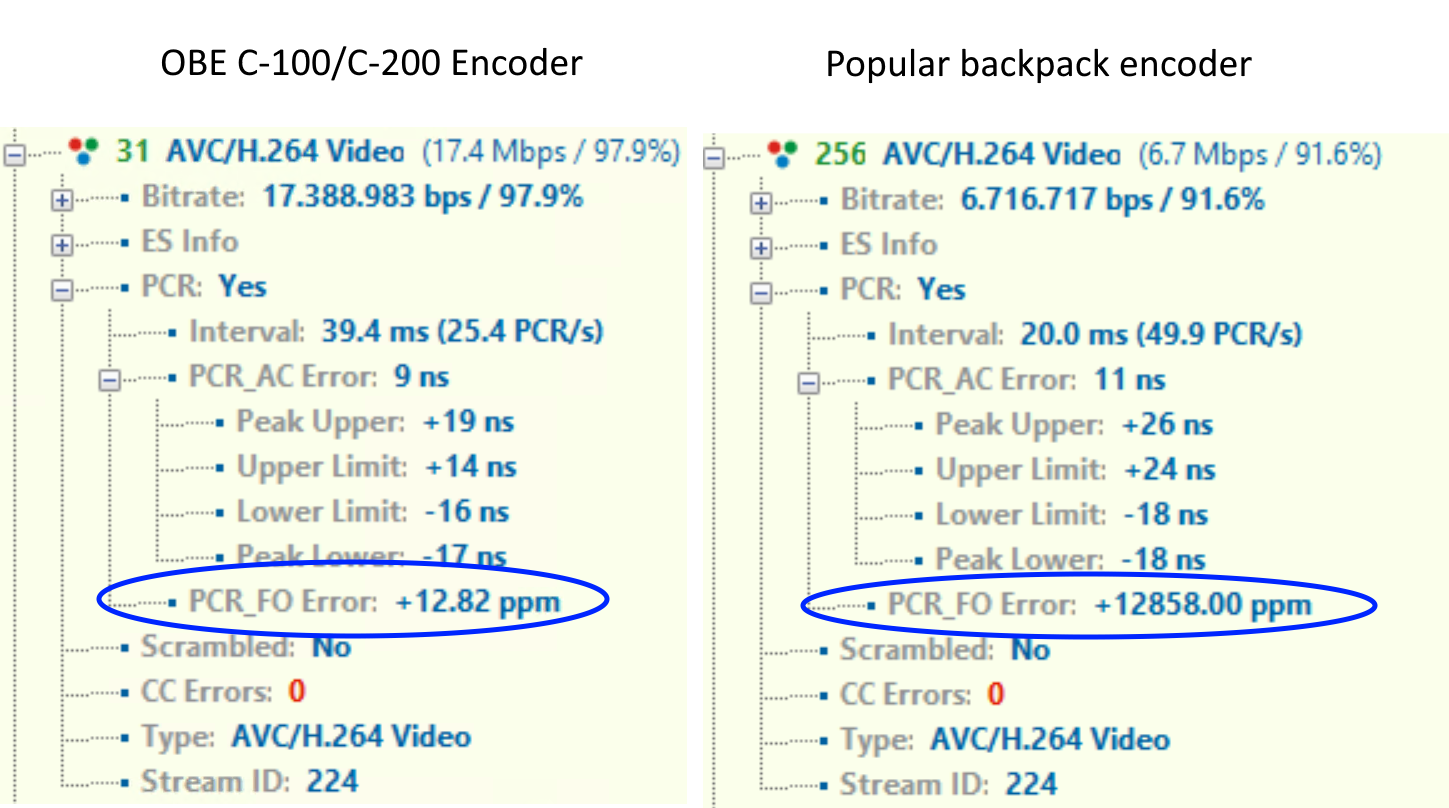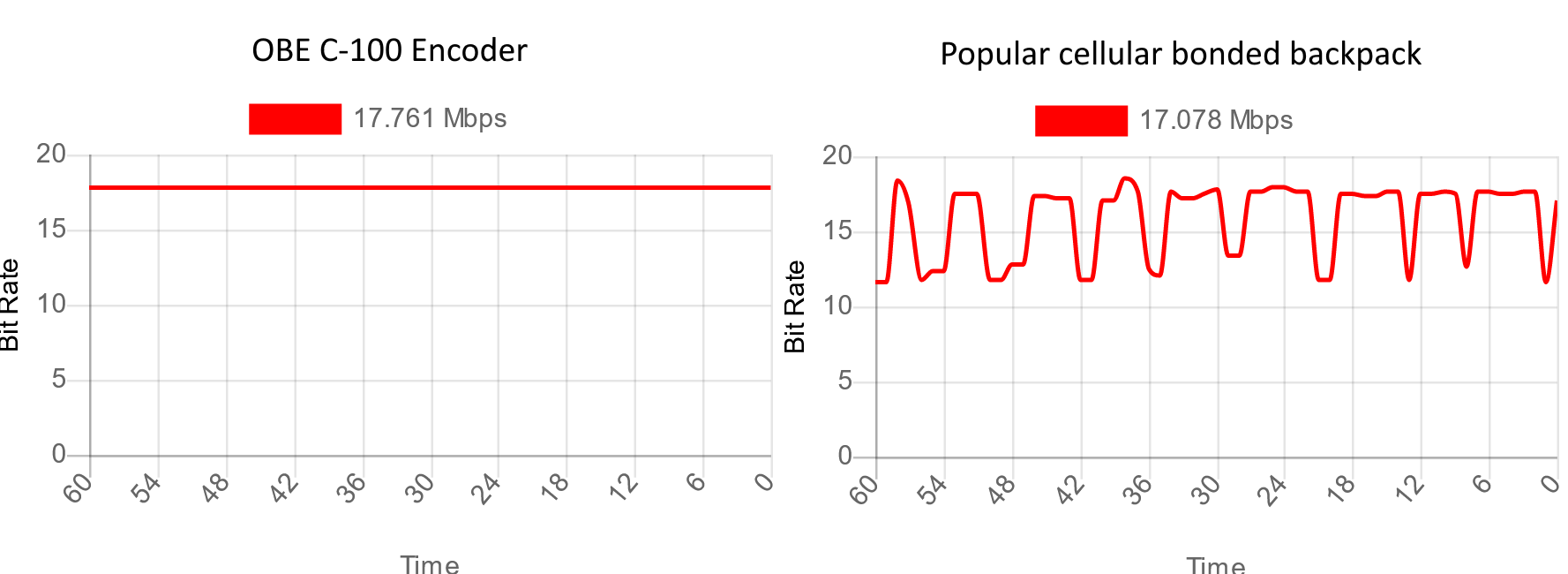SRT is a widely used protocol for transporting video over the internet, but not all SRT streams are made equal. The data contained inside the SRT session also matters in professional video applications like sports that may reach dozens of separate providers and rights holders using many different manufacturers, or need to be integrated into an ST-2110 environment with precise PTP timing. In a previous blog post we talked about how Constant Bitrate (CBR) transport stream matters for sport transmissions. In this blog post we’ll look at other transport stream metrics which matter in sports, this time using another popular backpack-style broadcasting solution. But this is not a problem specific to backpack solutions – they are common amongst entry level throwdown encoders.
Output Jitter
The first metric we will look at is jitter. In this instance jitter is not network jitter as testing is taking place on a LAN, but instead caused by the product releasing some packets very late (which we will refer to as “output jitter”):
 The data (note the scale) shows OBE C-100/C-200 has low output jitter, but on the other hand the backpack solution has substantially worse jitter, around three hundred times worse. This will cause problems with professional receivers or if the stream is put onto satellite or specialist fibre links which are shared with other video streams or data. Despite the device managing to maintain CBR, which is an average rate, its standard deviation (RMS) is very high, as it is releasing some packets either too early or too late. Many receivers will show a black screen as a result of the stream on the right as they are not able to handle packets arriving 60ms or more late.
The data (note the scale) shows OBE C-100/C-200 has low output jitter, but on the other hand the backpack solution has substantially worse jitter, around three hundred times worse. This will cause problems with professional receivers or if the stream is put onto satellite or specialist fibre links which are shared with other video streams or data. Despite the device managing to maintain CBR, which is an average rate, its standard deviation (RMS) is very high, as it is releasing some packets either too early or too late. Many receivers will show a black screen as a result of the stream on the right as they are not able to handle packets arriving 60ms or more late.
PCR Frequency Offset
The next metric we will look at is PCR Frequency Offset. The Program Clock Reference (PCR) is the main clock of the transport stream and, put simply, is the rate at which video frames arrive relative to a precise reference clock such as GPS or PTP. If this rate is too high or too low compared to a reference clock, a professional decoder will struggle to reclock (frame synchronise) the video to match a house reference or PTP. Frame synchronisation sounds like a simple task but requires a sophisticated implementation to do well (more on that another day). Many professional receivers have a sophisticated implementation of frame synchronisation, in contrast to entry level receivers, and so the PCR Frequency offset cannot be too large. The DVB specification mandates this frequency offset to be 30ppm, though many receivers are more tolerant:
 Again, the OBE C-100/C-200 has a stable PCR Frequency Offset, while the backpack solution shows a very large PCR Frequency Offset, around a thousand times worse than the OBE C-100/C-200. Many professional receivers will not be able to play a stream with such a large PCR offset. In particular, an SRT stream like the one on the right will be difficult to convert cleanly to a precise format like ST-2110 without either frame drops/audio clicks, or a long delay to attempt hide these issues.
Again, the OBE C-100/C-200 has a stable PCR Frequency Offset, while the backpack solution shows a very large PCR Frequency Offset, around a thousand times worse than the OBE C-100/C-200. Many professional receivers will not be able to play a stream with such a large PCR offset. In particular, an SRT stream like the one on the right will be difficult to convert cleanly to a precise format like ST-2110 without either frame drops/audio clicks, or a long delay to attempt hide these issues.
Note that throughout all of these measurements the SRT protocol reports no errors, as it has no knowledge of the data inside that it’s transporting.
Conclusion
Whilst a product might have a shiny SRT logo on it, this only means it’s able to speak the SRT protocol, but the data inside the SRT wrapper still needs to match correct broadcast norms in order to be distributed globally to many types of receiver. This does not matter in point-to-point single vendor applications such as newsgathering backpacks, but it does matter for crucial sports transmissions to dozens of takers. The OBE C-100/C-200 Platform is used extensively for global sports transmissions and in ST-2110 environments for SRT to/from ST-2110 processing.

